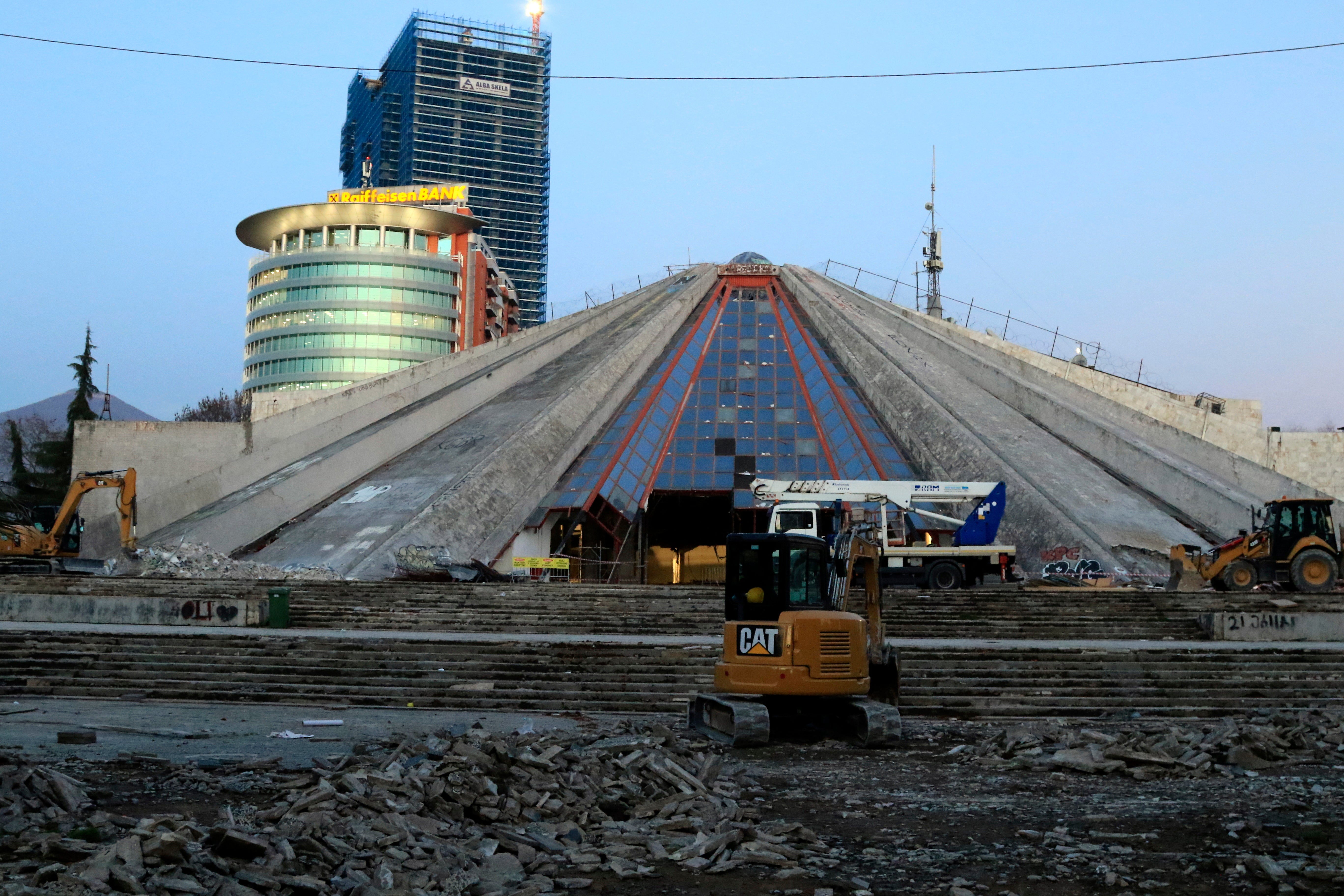Albanian communist-era landmark reinvented as youth center
A pharaonic landmark in central Tirana built as a posthumous museum for Albania’s communist-era strongman, Enver Hoxha, is being transformed into a youth training and art center

Your support helps us to tell the story
From reproductive rights to climate change to Big Tech, The Independent is on the ground when the story is developing. Whether it's investigating the financials of Elon Musk's pro-Trump PAC or producing our latest documentary, 'The A Word', which shines a light on the American women fighting for reproductive rights, we know how important it is to parse out the facts from the messaging.
At such a critical moment in US history, we need reporters on the ground. Your donation allows us to keep sending journalists to speak to both sides of the story.
The Independent is trusted by Americans across the entire political spectrum. And unlike many other quality news outlets, we choose not to lock Americans out of our reporting and analysis with paywalls. We believe quality journalism should be available to everyone, paid for by those who can afford it.
Your support makes all the difference.A pharaonic landmark in central Tirana built as a posthumous museum for Albania's communist-era strongman, Enver Hoxha is being transformed into a youth training and art center.
Albanian Prime Minister Edi Rama attended Thursday's symbolic start of work to radically transform the largely abandoned, 17,000-square-meter (180,000-square-foot) structure.
Under a blueprint by Rotterdam-based design firm MVRDV, it will acquire 18 halls for teaching and promoting IT, robotics and design in an after-school program for teenagers. A third of the building will be offered for lease to secure the revenue for its maintenance.
Known to Albanians as the Pyramid, the concrete-and-glass marble-sheathed building looks more like a squashed cone.
Located next to Tirana's main government complex, it was built in 1988 as a museum to Hoxha, who headed the paranoid, isolationist communist regime that ruled Albania with an iron fist after the end of World War II until his death in 1985.
It was designed by Hoxha's daughter and her husband, both architects.
After Albanian communism collapsed in December 1990, the building served as a cultural center, and hosted a private television station, offices, shops, night clubs as well as venues for fashion shows or other events. During the 1999 war in Kosovo, part of it was used as a NATO base.
Just before the reconstruction started, it still contained a private radio station and offices.
Rama hailed the planned transformation as a boon to Albanian youth.
“Such a building created to glorify Enver Hoxha’s figure and the time of the brutal dictatorship today becomes ready to do exactly the opposite ... giving unlimited freedom to young people to challenge themselves and seek their future,” he said Thursday.
The project's cost and time frame were not disclosed. Construction will be undertaken by the private Albanian-American Development Foundation, which commissioned the MVRDV design.
Apart from the interior transformation, the outside will also be largely redesigned, with the creation of a series of staircases leading up to the circular summit.
Long viewed with mixed feelings by Albanians due to its link with the hated communist regime, the building narrowly escaped destruction a few years ago under a former center-right government.
Other proposals had included turning it into a national library, a theater or even the country’s parliament.
But activists rallied to protect it, arguing that it should be seen as part of Albania’s history rather than a symbol of the former regime.
Rama said the transformation will result in “a great symbol, a beautiful symbol, a strong symbol of (the) Albania we want to have ... for our children.”
___
Nicholas Paphitis in Athens contributed to this story.